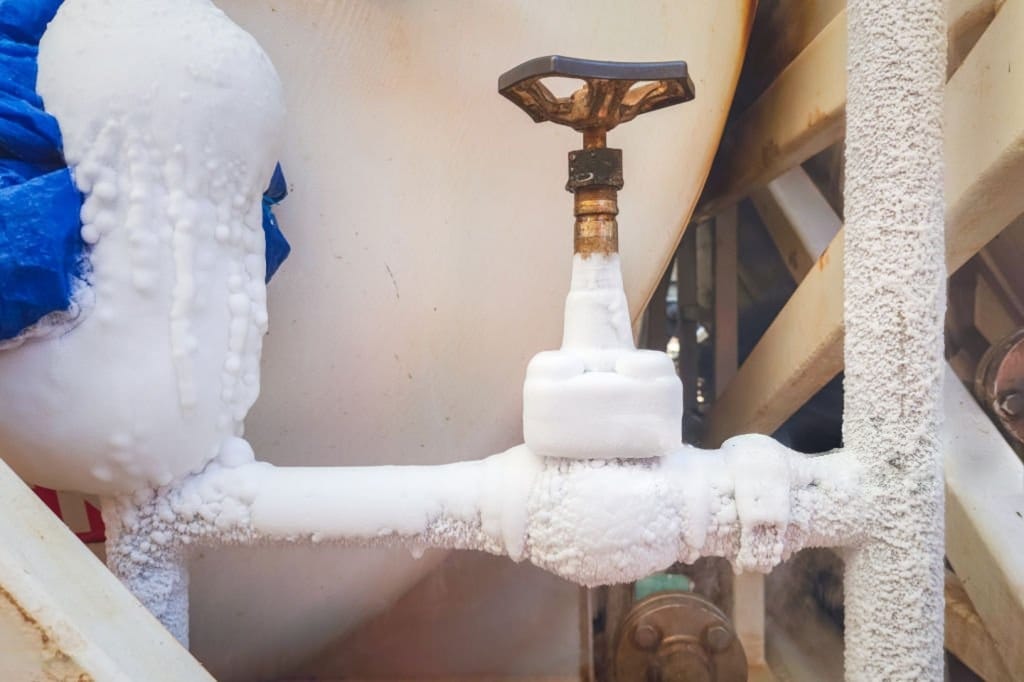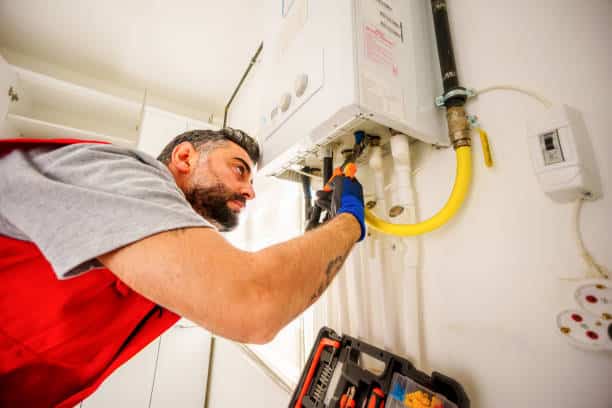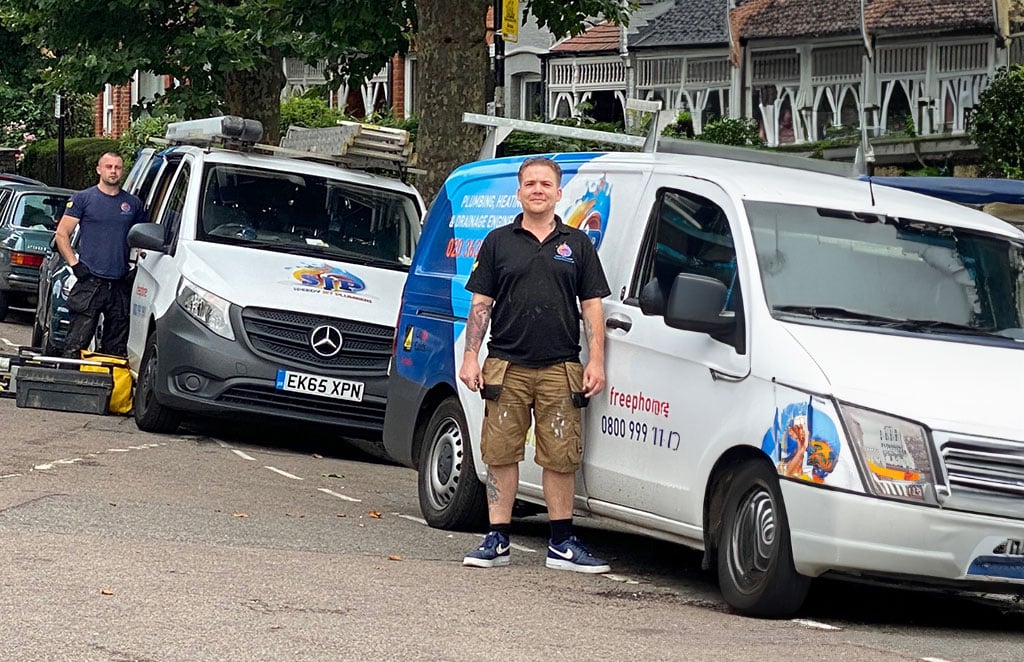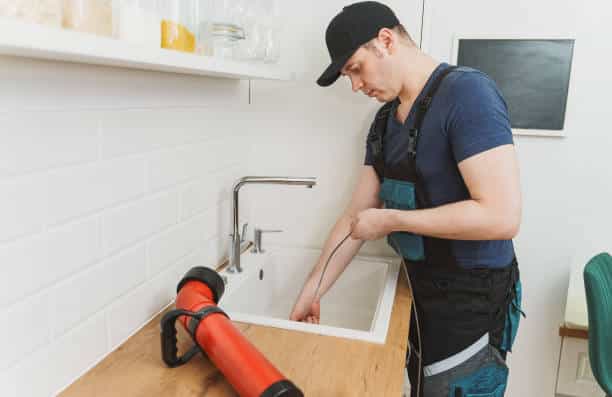Winter brings cold weather, shorter days, and the risk of frozen pipes. Frozen or burst pipes can cause significant water damage, costly repairs, and disruption to your home or rental property. Homeowners and landlords must take proactive steps to safeguard their plumbing systems before temperatures drop.
At Speedy Jet Plumbers, we provide expert advice and professional plumbing services to help prevent winter plumbing disasters. This guide covers practical tips, maintenance strategies, professional solutions, safety considerations, and troubleshooting guidance to keep your pipes safe during the colder months.
Why Frozen Pipes Are a Serious Concern
Frozen pipes are more than just an inconvenience. They can:
- Cause pipe bursts, flooding your home or property
- Lead to expensive plumbing repairs and property damage
- Interrupt your water supply for days
- Increase the risk of mould and damp damage
Water expands when it freezes, exerting pressure on pipes, joints, and fixtures. Even small cracks can result in leaks once the ice melts. Understanding the causes and preventive measures is essential to avoid these costly and stressful situations.
Common Causes of Frozen Pipes
Several factors increase the risk of frozen pipes during winter:
- Poorly insulated pipes: Especially those in unheated areas like garages, lofts, basements, or crawl spaces
- Exposed outdoor taps: Hose bibs and garden taps can freeze if left unprotected
- Cold drafts: Pipes near windows, exterior walls, or doors are more vulnerable
- Extended periods of extreme cold: Prolonged low temperatures increase the risk of ice forming in pipes
- Neglected maintenance: Lack of seasonal preparation leaves pipes unprotected
- Older plumbing systems: Pipes made of metal or corroded materials are more likely to freeze
Identifying these vulnerabilities allows homeowners and landlords to implement effective preventive measures.
How to Prevent Frozen Pipes
Preventing frozen pipes involves a combination of pipe insulation, winter plumbing tips, and smart household practices.
1. Insulate Vulnerable Pipes
Pipe insulation is one of the most effective ways to prevent freezing:
- Use foam or rubber pipe sleeves for indoor pipes
- For outdoor pipes, consider weatherproof insulation and protective covers
- Pipes in unheated areas such as garages, attics, basements, or crawl spaces should always be insulated
Proper insulation reduces the risk of ice formation even during severe cold spells and protects your plumbing from thermal stress.
2. Protect Outdoor Taps
Outdoor taps and garden hoses are particularly vulnerable to freezing:
- Disconnect and drain hoses before winter
- Install insulated tap covers for outdoor taps
- Consider frost-free taps for long-term protection
Neglecting outdoor taps can allow ice to form, which may travel back into internal plumbing systems, causing damage inside your property.
3. Maintain a Consistent Indoor Temperature
Keeping your home or rental property warm helps prevent pipes from freezing:
- Maintain heating at a minimum temperature, especially overnight
- Open cabinet doors under sinks to allow warm air to circulate around pipes
- Avoid turning off central heating completely during extremely cold periods
Even a small increase in temperature can prevent frozen pipes in vulnerable areas, particularly in homes with older or exposed plumbing.
4. Allow a Slow Drip
During extremely cold weather:
- Let taps connected to vulnerable pipes drip slowly
- Running water through pipes, even at a trickle, reduces the risk of freezing
- Focus on taps furthest from the main water supply
This technique helps relieve pressure in the system and prevents water from stagnating in exposed pipe sections.
5. Seal Gaps and Drafts
Cold air can freeze pipes located near exterior walls:
- Use caulk or foam to seal gaps around windows, doors, and wall penetrations
- Insulate areas where pipes pass through exterior walls
- Install draft excluders in basements, garages, and crawl spaces
Blocking cold air prevents localized freezing around pipework, especially in older homes.
6. Monitor Vulnerable Areas
Regular inspections can catch potential issues early:
- Check garage, loft, basement, and utility room temperatures
- Identify exposed pipes and consider additional insulation if needed
- Look for signs of frost, condensation, or ice forming on pipes
Monitoring these areas allows timely intervention before freezing occurs, reducing the likelihood of burst pipes.
7. Prepare for Emergencies
Even with precautions, frozen pipes can still occur. Being prepared can minimise damage:
- Know the location of your main water shut-off valve
- Keep a bucket, towels, and a hairdryer handy to thaw minor ice safely
- Avoid using open flames to thaw pipes
- Keep contact information for professional plumbing services like Speedy Jet Plumbers ready
Emergency preparedness reduces damage and helps homeowners act quickly if freezing occurs.
Professional Solutions to Prevent Frozen Pipes
For long-term protection, professional plumbing services provide:
- Pipe lagging and insulation installation for indoor and outdoor pipes
- Frost-free taps and valves for exposed exterior water outlets
- Winter plumbing inspections to identify weak spots, leaks, or areas prone to freezing
- Leak detection systems to monitor pipe pressure and potential ice formation
- Preventive maintenance packages to protect your property year-round
At Speedy Jet Plumbers, we offer tailored solutions to protect homes and rental properties during winter months, reducing the risk of costly water damage.
Common Mistakes to Avoid
1. Relying Only on DIY Methods
While simple methods like dripping taps or using towels can help, professional insulation and pipe protection are more reliable for long-term safety.
2. Ignoring Outdoor Plumbing
Hoses and outdoor taps are often overlooked. Even a single frozen tap can lead to internal pipe damage and potential flooding.
3. Turning Off Heating Completely
Switching off heating to save energy may leave vulnerable pipes exposed, particularly overnight or during prolonged cold spells.
4. Using Heat Sources Improperly
Point heaters or fireplaces near pipes may provide temporary warmth but are not substitutes for proper insulation. Overheating can also damage pipe joints.
Seasonal Winter Plumbing Checklist
To systematically prevent frozen pipes, follow this winter plumbing checklist:
- Inspect all exposed and unheated pipes
- Install foam or rubber insulation on vulnerable indoor pipes
- Fit insulated tap covers for outdoor taps and disconnect hoses
- Maintain consistent heating throughout your property
- Open cabinet doors under sinks for better air circulation
- Seal drafts and gaps around exterior walls
- Allow taps to drip during extreme cold spells
- Prepare an emergency kit with bucket, towels, and hairdryer
- Schedule a professional plumbing inspection before winter
- Keep emergency plumber contact information readily available
Implementing this checklist ensures comprehensive protection and reduces the risk of winter plumbing emergencies.
DIY vs Professional Solutions: Which Is Best?
While DIY measures are suitable for minor precautions, professional services offer long-term protection:
| Aspect | DIY Methods | Professional Solutions |
|---|---|---|
| Cost | Low upfront cost | Higher initial cost but prevents emergencies |
| Effectiveness | Works for minor issues | Protects against severe cold and frozen pipes |
| Safety | Risk of damage or injury | Safe, certified techniques |
| Maintenance | Requires frequent monitoring | Comprehensive annual or seasonal service |
| Long-Term Results | Temporary | Lasting protection and preventive maintenance |
Professional help ensures peace of mind and reduces the risk of expensive repairs or insurance claims due to burst pipes.
Additional Winter Plumbing Tips
- Install frost alarms: Sensors can alert you to drops in temperature around vulnerable pipes
- Consider smart thermostats: Maintain consistent temperatures even when away from home
- Check insulation around water tanks: Insulating hot water tanks reduces freezing risk
- Educate tenants or family members: Make sure everyone understands winter plumbing precautions
- Monitor water pressure: Low pressure in extreme cold can indicate frozen sections
These additional precautions add another layer of safety and prevention.
What to Do If a Pipe Freezes
If you discover a frozen pipe:
- Turn off the water supply immediately
- Locate the frozen section by checking for frost or ice accumulation
- Thaw gradually using a hairdryer, heat lamp, or warm towels
- Avoid open flames as this can damage pipes and create safety hazards
- Call a professional if thawing is unsuccessful or if a pipe has burst
Prompt action reduces water damage, prevents further freezing, and ensures safety.
Signs That Pipes Are at Risk
- Pipes in unheated areas, garages, or basements
- Metal pipes along exterior walls
- Outdoor taps left unprotected
- Pipes showing condensation or frost during cold weather
- Water pressure drops or slow flow during extreme cold
Addressing these signs early prevents expensive repairs and keeps your home safe.
Conclusion
Preventing frozen pipes is essential for avoiding water damage, costly repairs, and disruption during winter months. Homeowners and landlords should implement a combination of pipe insulation, winter plumbing tips, and emergency preparedness to protect their properties.
Professional services from Speedy Jet Plumbers provide expert inspection, insulation, and protection strategies to ensure your home’s plumbing remains safe throughout winter. By taking preventive action early, you can enjoy peace of mind knowing your pipes are secure, your water supply is uninterrupted, and your property is protected from seasonal plumbing hazards.




